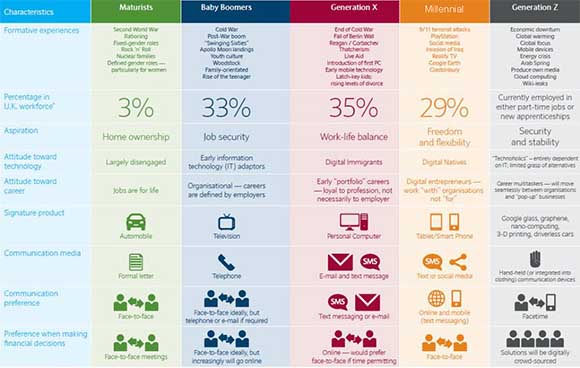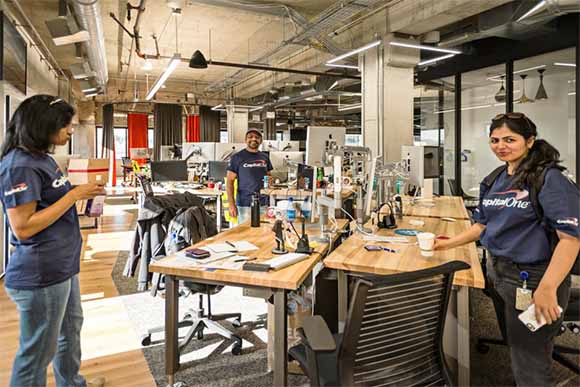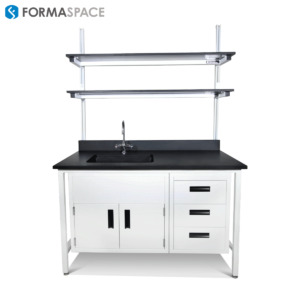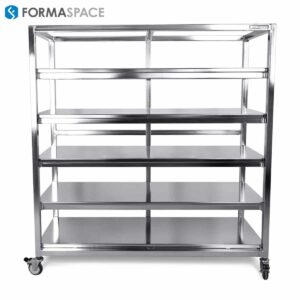Millennials have a reputation for being different (if not difficult) in the workplace. We take a look at how savvy managers can leverage the characteristic strengths of Millennials to help them achieve optimal results while avoiding the pitfalls and conflicts that can arise due to generational differences.
Meet the Millennials – the World’s Most Populous Generation
They are the children of the Baby Boomers.
We’ve called them Gen Y, Echo Boomers, Generation Next, and Twenty-Somethings.
We’ve also labeled them as delicate snowflakes that melt under pressure, self-absorbed and self-entitled.
But what we should be calling them is Number One.
Did you realize Millennials now comprise the largest population segment in the US and the world?
The Millennial generation (born between 1983 and 2001) is 80 million strong, making them the largest US population segment – bigger than the generations that brought them into the world; the Baby Boomers (born 1946 – 1964), Generation X (born 1965-1982), and the Builders / Silent Generation (born 1925 – 1945).
The Millennial generation’s dominant position extends worldwide, with almost 2 billion members living on the planet today, more than any other generational group.
Who Are the Millennials and What Sets Them Apart from other Generations?

The Builders / Silent Generation is defined by:
- The Great Depression
- WWII
- Radio and movies
Baby Boomers are defined by:
- The Vietnam War
- Civil Rights Movement
- Women’s Lib
- TV and Rock and Roll
Gen Xers are defined by:
- Working moms
- Higher divorce rates
- The AIDS epidemic
- MTV and computer video games
Millennials have grown up in a world influenced by:
- Tragedies, such as the 911 terrorist act
- Technology like iPhones and iPads
- Developments in pop culture like YouTube vlogs and streaming music
- New social media platforms (Facebook, Snapchat, Twitter, and instant messaging, etc.)
10 Tips for Successfully Managing Millennials in the Workplace
As a group, Millennials have many positive traits. They are more educated than earlier generations and certainly more tech savvy. They are also the most racially/ethnically diverse generation to date.
However, many managers find certain Millennial behaviors confounding in the workplace. Some of these may stem from the exceptionally close relationship many Millennials have with their parents (25% raised in single parent households) as well as the style of education many received, which emphasized working collaboratively in groups to solve problems.
* Interview with Goldman Sachs Chief Learning Officer Jason Wingard on developing wide-reaching programs to help the millennial workforce learn and grow, which in turn, helps with retention and recruitment.
In the following section, we’ll look at ten different ways you can embrace the positive characteristics of Millennials (and minimize the negative ones) to successfully manage their career development and integrate them with other generations of workers.
1. Stop Resisting Change. Accept New Realities.
Tip 1 has more to do with addressing your own attitudes, assumptions, and mindset.
To manage Millennials successfully in the workplace, you will have to come to terms with the fact that times are changing.
It’s happened before. If you are a Gen X or Baby Boomer manager, you might think back to a time when you thought workers older than yourself – especially those using paper reports, overhead projector slide foils or even slide-rules — were hopelessly outdated dinosaurs. Now it may your turn to be the “old fogey.”
Resist the urge to say things like “We’ve always done it that way in the past.”
Instead, work through the five stages of grief* you may be experiencing (about your own mortality perhaps!) and begin to accept new ways of working.
* The five stages of grief are denial, anger, bargaining, depression, and acceptance
You’ll get more benefit from Millennial employees if you go with the grain and meet them at least halfway.
Try to see the world through the eyes of a Millennial. They grew up on Facebook, iPhones, and texting.
For example: If your call for an urgent team meeting meets with skepticism or indifference, consider that a Millennial might think the need for a face-to-face meeting is unnecessary when a group chat message sent to the team via Slack could give everyone an instant update.
2. Send the Right Message to Attract Millennial Job Candidates.
Creating the right positive message will help recruit Millennial employees. Keep in mind that traditional compensation packages and reward strategies will have to be adjusted in light of Millennials preferences for things like” life/work balance.” For example, a Millennial may place more value working in a role that offers the possibility of “changing the world for the better” or “making a difference” over a position which benefits package touts long-term job security and steady advancement.
| More Important | Less Important |
| Work Life Balance | Unlimited Focus on Career Success |
| Regular Positive Feedback | Annual Job Review |
| Purpose Oriented | Task Oriented |
| Personal Impact on the Community | Job Compensation Plan |
| Celebrate Strengths | Fix / Improve Weaknesses |
| Mentor | Manager |
| Personal Growth | Job Stability and Security |
| Delivering Results | Advancement via Seniority and Time of Service |
| Disruptive Entrepreneurial Innovation | Steady Incremental Growth |
| Acquiring Transferable Job Skills | Lifelong employment at a company |
* What Millennials Prefer in Making Career Choices

– Point of view from Cody Adams,
Formaspace Senior Design Engineer,
a Millennial working for a Non-Millennial Manager
3. Managers Need to Manage Assignments in New Ways.
Many first-time managers of Millennials are startled by their relative indifference to maintaining traditional hierarchical roles in the workplace. Example: At the annual stockholder meeting, the new Millennial intern walks over to the corporate CEO and strikes up a conversation about an issue he or she is concerned about. “Why does this happen?” asks the Non-Millennial manager. One explanation: many Millennials grew up in Baby Boomer households where the parents treated their offspring more as “friends” rather than children who were best seen and not heard. One consequence of this so-called “Peerenting” style of parenting is that Millennials are far less intimidated by authority figures. Reinforcing this behavior is the fact that Millennials are the first generation to have access to the world’s information (thanks to the Internet) without having to go through a hierarchy of gatekeepers.
The unconventional work habits of many Millennials can also ‘bug’ non-Millennial managers:
- Working collaboratively in groups is perfectly normal for Millennials (in many cases this is how they were educated in school) to the extent that an individual assignment can be seen as a type of cruel and unusual punishment (in contrast to Baby Boomers or Gen X employees who tend to crave individualism).
- For Millennials, the results are what count. In their minds, it shouldn’t matter if they are working at home one day, clocking in and out at non-standard hours another, or working from a coffee shop on a third day as long as the assignment gets done.
In response, managers should:
- Focus more on results, less on methods and work styles
- Rotate Millennials through a range of assignments to keep their interest levels high and to identify strengths and weaknesses which might not be revealed so easily in group assignments
- Where appropriate, divide projects into group assignments that are matched to skill sets (rather than assigning projects to individuals only)
- Where possible, incorporate a mix of Non-Millennial and Millennials on project assignments
- Brief Non-Millennial employees on why work methods are changing and help them accept these changes

– Point of view from Gregg Casey,
Formaspace VP of Engineering and Design,
a Non-Millennial Managing Millennials
4. Provide (and Solicit) More Frequent Feedback Than You Normally Would.
Many managers report than Millennials prefer frequent feedback. (This may be another consequence of “Peerenting” mentioned above.)
Don’t wait until the end of the year to provide an employee evaluation.
Learn how to give real-time feedback that’s honest (but try to highlight positive news and improvements about your Millennial employee).
Be direct. Say exactly what you are looking for.
Over-communicate in both directions.
5. Transfer Institutional Knowledge Before It’s Lost.
Many American businesses are sitting on a demographic time bomb.
It’s estimated that, at large companies, 30-40% of employees will retire in the next 5 – 10 years.
That’s because the Baby Boomer generation is retiring at an increasing rate. By 2020, it’s estimated that 1 in 5 American workers will reach retirement age. The result? Potentially 35 million workers walking out the door, taking their years of domain expertise and institutional knowledge with them.
This retirement wave makes it imperative to transfer the knowledge from older workers to Millennials before its lost forever or has to be reacquired from scratch.
Are there any silver linings in this dark cloud? Yes. Savvy managers will see a retention opportunity. Because Millennials want to move up the corporate ladder faster than previous generations, the mass retirement of Baby Boomers can provide an opportunity for the most capable Millennials to move up the ranks quickly, which will help keep them when they might otherwise be tempted to look for advancement opportunities elsewhere.
6. Work to Earn Millennials’ Loyalty in Order to Improve Employee Retention.
In the last tip, we touched on retention. It’s such a big issue with Millennials, it deserves its own section.
Unlike previous generations of workers, which were encouraged to stay in one place for their entire career (due to the promise of life-long employment, a retirement pension, and health benefits), today’s Millennials see work as a more transactional commodity. They expect to work many places, getting transferable job skills from each employment setting before moving to the next opportunity. As a result, many Millennials may have more companies listed on their resume (despite having worked fewer years) than their older peers.
Because many dissatisfied Millennial workers are pre-disposed to move on when unhappy (rather than trying to resolve issues), it’s important to set up an internal communications program that keeps tabs on Millennial employees and their attitudes about the company. Are they happy? What do they like? What can be improved? Do they want to stay? If they want to go, why? (Be sure to conduct thorough exit interviews for Millennials who choose to leave.)
In addition to the ideas gathered during Millennial worker satisfaction surveys, tips in the following sections can also help promote loyalty and employee retention.
7. Create an Engaging Work Environment That Promotes Advancement.
For many millennials, their ideal work environment looks a lot like a high-tech software company with an open plan “industrial-look” design.

These modern office spaces promote a sense of excitement and create opportunities for collaboration that appeal to Millennials. In fact, the Industrial-look shared spaces resemble a favored Millennial work hangout, the coffee shop.
Here at Formaspace, we have a lot of experience building the industrial-look furniture for many of the leading tech companies in Silicon Valley and beyond.* What we’ve learned from these projects is that attractive, modern work spaces are a powerful recruiting tool for attracting Millennials.
(* You can find our furniture products featured in the headquarters of Google, Twitter, and the ‘fintech’ offices of Capitol One.)
Other things to consider beyond the physical work environment:
- We’ve already mentioned that Millennials believe in quick advancement based on results (rather than seniority and time of service). Consider setting up new intermediate grade levels to allow high achievers to step through the ranks more quickly.
- Take technology seriously. Collaborative online work tools like Slack will feel comfortable to Millennials and may help workers from other generations as well.
8. Keep on Learning. Keep on Growing.
Millennials are the most educated generation so far, with a higher percentage of high school and college graduates to date.
They want to keep up with the latest information. As some HR wags have said: Let them learn and grow – otherwise they may go.
Fortunately, costs for educational programs may be less of an issue than in the past. An increasing number of online and distance learning classes are available, many are available for free – or at costs that are much lower than what companies used to spend to send their best and brightest to business school.
Depending on your industry, you may also be able to steer your Millennial employees toward professional development groups or standards governing bodies where their input will be highly valued.
9. Don’t Step on the Dream. Nurture It.
Millennials tend to believe strongly in standing up for the community – by taking a stand for what they believe in and being part of a larger whole.
The causes championed by Millennials can vary, ranging from not eating meat/veganism to environmental protection/recycling and upcycling, to promoting equal opportunity and human rights.
While Non-Millennial employees may find the tendency of Millennials to promote ideas like these at the workplace to be either mildly amusing, optimistic but naive, or even potentially distracting, the savvy manager will encourage Millennials to think of the company as part of their community by helping them promote and encourage their special causes (assuming, of course, they are compatible with the company’s own mission). Successfully managing this will help cement a bond with the Millennial that will help develop strong personal loyalty as well as help promote the company’s reputation through positive, authentic word-of-mouth messages.
10. Consider Reverse Mentoring Opportunities.
Have you heard of Reverse Mentoring?
Here’s how it works. The general mentoring concept is that older mentors impart their received wisdom on younger people.
But in many cases, the reverse is just as useful. For example, many Millennials can work with technology with great ease — skills that older managers could find very useful (not to mention the benefits of learning from each other in other ways). Interested? A good case study to read is the experience of Darah Kirstein at BNY Mellon mentoring her chairman and CEO Gerald Hassell.
Formaspace Wants to Be Part of Your Plan for Success
As a leading supplier of furniture for Fortune 500 companies, we know what it takes to be successful. Talk to your friendly Formaspace Design Consultant today. Simply fill in your details below, and soon you’ll be speaking with an expert who can provide a wealth of insight and experience. Working together, we can come up with the perfect solution to make your office an ideal place to work.









